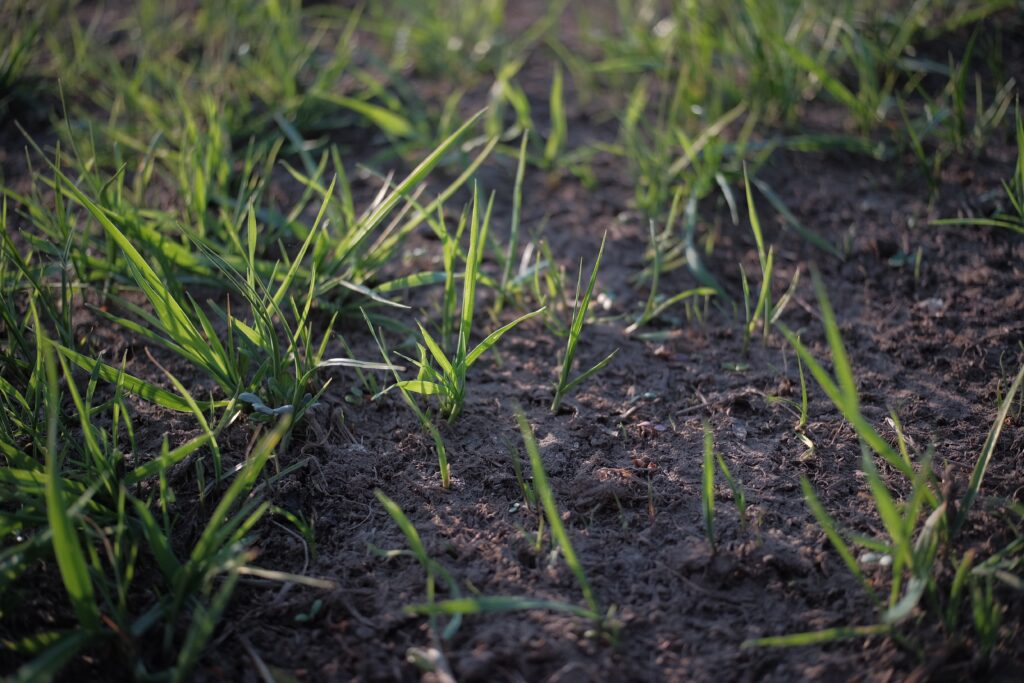Introduction: Agriculture That Heals Rather Than Degrades
Conventional agriculture has succeeded spectacularly at production—feeding billions of people through intensive cultivation, mechanical efficiency, and chemical inputs. Yet this success carries hidden costs: degraded soils losing organic matter, depleted aquifers, chemical residues contaminating water supplies, and loss of biological diversity that formerly supported ecosystem resilience.
For decades, farmers accepted this trade-off as inevitable—maximize production or preserve ecology, but not both. Regenerative agriculture challenges this false choice. This emerging farming philosophy demonstrates that agriculture designed to build soil health, enhance biodiversity, and sequester atmospheric carbon actually produces better yields, lower input costs, and greater resilience than conventional systems.
The paradigm shift is profound: rather than extracting maximum production from soil through purchased inputs and mechanical intervention, regenerative agriculture works with natural soil biology, enhances ecosystem function, and views farms as biological systems to be managed rather than chemical factories to be operated.
This transition isn’t theoretical idealism. Thousands of North American farmers operating regenerative systems report improved profitability, reduced input costs, enhanced crop resilience during drought and flooding, and measurable soil health improvements within 3-5 years. Increasingly, agricultural investors, food companies, and commodity markets recognize and reward regenerative practices.
This comprehensive guide explains regenerative agriculture’s core principles, demonstrates practical implementation pathways, and provides concrete steps any farmer—from small-scale gardeners to large-scale row crop operations—can adopt immediately.

Understanding Regenerative Agriculture: Beyond Sustainable to Restorative
Regenerative agriculture is frequently confused with “sustainable” farming, yet the distinction matters profoundly.
Sustainable agriculture maintains current conditions. It reduces external inputs, minimizes environmental damage, and sustains productivity indefinitely without degradation. This represents substantial improvement over conventional agriculture but accepts existing soil conditions as baseline.
Regenerative agriculture actively restores and improves. It rebuilds depleted soils, enhances biological communities, increases ecosystem function year-over-year, and moves from degradation toward health. Regenerative farms produce better each season than the previous—measurably improving soil organic matter, water retention, microbial diversity, and productivity simultaneously.
The Foundational Principle: Working With Nature Rather Than Against It
Conventional agriculture emphasizes control: controlling weeds through herbicides, controlling pests through insecticides, controlling soil conditions through synthetic fertilizers. Each control action requires ongoing intervention; stopping applications allows weeds, pests, and soil depletion to resume.
Regenerative agriculture emphasizes ecosystem design: building soils so fertile that crop competitiveness suppresses weeds naturally, encouraging predatory insects and soil organisms that control pests biologically, and designing rotations and cover cropping systems that maintain fertility without external inputs.
This fundamental difference—control through external inputs versus resilience through ecological design—explains why regenerative systems become progressively easier and more profitable over time. Initial transition requires active management; established regenerative systems self-regulate through healthy soil biology and ecosystem balance.
Six Core Principles of Regenerative Agriculture
Principle 1: Minimizing Soil Disturbance
The Problem with Tillage:
Conventional agriculture relies on plowing, disking, and cultivation to control weeds, incorporate amendments, and prepare seedbeds. These actions destroy soil structure, expose carbon-rich organic matter to oxidation, disrupt fungal networks, and pulverize aggregates that took decades to develop.
Research shows that each plowing event reduces soil organic matter 1-3% annually—a death by thousand cuts where continuous tilling gradually degrades soils across years and decades.
The Regenerative Solution:
No-till and reduced-till systems minimize mechanical disturbance. Rather than plowing fields, farmers maintain living soil architecture by:
- Direct seeding – Planting through surface residue without tillage
- Minimized cultivation – Using shallow soil disturbance (2-3 inches maximum) only when absolutely necessary
- Precision field traffic – Concentrating equipment passes on specific paths, leaving remainder uncompacted
These practices preserve soil structure, protect fungal networks critical for nutrient cycling, and maintain the billions of soil organisms performing ecological functions that expensive inputs previously attempted to replace.
Principle 2: Permanent Soil Coverage
Why Bare Soil is Agricultural Enemy #1:
Exposed soil experiences erosion from raindrop impact and water runoff, oxidative loss of organic matter from sun and heat exposure, and surface crusting that prevents water infiltration. Summer fallows and winter bare fields represent profound soil degradation occurring invisibly.
Regenerative Coverage Solutions:
Regenerative farms maintain living or recently-dead plant material covering soil surface year-round through:
Cover Crops – Planted specifically to provide soil protection and biological function:
- Winter cover crops (winter rye, hairy vetch, cereal rye mixes) established before harvest, protecting soil through winter
- Summer cover crops (sudangrass, buckwheat, annual legumes) grown during fallow periods
- Perennial cover crop strips within production fields providing permanent protection
Crop Residue Management – Rather than removing straw, stalks, and leaves:
- Leaving corn stalks in-field after grain harvest provides winter/spring coverage
- Hay production capturing above-ground biomass while leaving root systems intact
- Strategic baling leaving percentage of residue in-field
Living Mulches – Interseeded permanent groundcover plants living among production crops, providing coverage and ongoing ecological function.
Permanent soil coverage eliminates erosion, dramatically increases water infiltration during rain events, moderates soil temperature extremes, and provides habitat for beneficial soil organisms.
Principle 3: Diverse Crop Rotations
The Problem with Monoculture:
Growing identical crops year-after-year selects for specialized pests and diseases targeting that specific plant, gradually building pest populations of extraordinary density. Agricultural pest epidemics are often iatrogenic—created by agricultural practices rather than natural ecosystem conditions.
Monocultures also deplete specific soil nutrients while leaving others unused, creating nutrient imbalances. Soil microbiota specialized for one crop fail to diversify; soil biology becomes simplified and fragile.
Regenerative Rotation Design:
Diverse rotations disrupt pest cycles, balance nutrient utilization, and support soil microbial diversity. Optimal rotations typically include:
Plant Family Rotation – Following plant families through sequential years:
- Year 1: Grass (corn, small grains)
- Year 2: Legume (soybeans, alfalfa, peas)
- Year 3: Brassicas or root crops (cabbage, radishes, or fallow with cover crops)
- Year 4: Return to grass (or repeat cycle)
Different plant families have different root depths, nutrient demands, and pest/disease associations; rotating confuses pests while varying nutrient extraction patterns.
Livestock Integration – Adding animals to crop rotations:
- Grazing cover crops after grain harvest
- Rotational cattle grazing distributing manure naturally
- Integrated poultry (chickens, turkeys) providing pest control and soil disturbance through scratching
- Livestock cycling fertilizer on-farm rather than importing external inputs
Perennial Inclusions – Integrating perennial crops where climatically viable:
- Perennial pastures during rotation phases
- Intercropped perennial trees (alley cropping)
- Permanent hedgerows providing wildlife habitat and erosion barriers
Principle 4: Living Roots Year-Round
Why Continuous Root Growth Matters:
Living root systems feed soil microbes through root exudates (sugars and organic acids plants secrete). Soil microbes dependent on this nutrition thrive during growing season, then starve during fallow periods. Repeated boom-bust cycles create fragile soil microbial communities.
Living Root Solutions:
Continuous living roots maintain constant microbial food supply, creating stable, diverse soil communities. Strategies include:
- Cover crops during off-season – Establish in fall before freeze or immediately after spring harvest
- Perennial pastures – Grazed crop residues and dedicated pasture areas providing year-round root activity
- Relay cropping – Planting succeeding crops before previous crop harvest, maintaining continuous living roots
- Interseeded cover crops – Establishing cover crops within standing cash crops, providing root activity continuity at harvest
Principle 5: Eliminating or Minimizing Synthetic Inputs
Transitioning Beyond Chemistry:
Conventional agriculture depends on synthetic nitrogen fertilizers, herbicides, fungicides, and insecticides. Regenerative systems reduce this dependence through:
Biological Nitrogen Fixation – Legume cover crops and rotational crops fix atmospheric nitrogen through rhizobia bacteria, replacing synthetic nitrogen fertilizers.
Compost and Organic Amendments – On-farm composting of crop residues, manure, and other organic matter recycles nutrients that synthetic fertilizers provide externally.
Biological Pest and Disease Management:
- Predatory insects (ladybugs, parasitic wasps, spiders) controlling pest populations
- Beneficial fungi (mycorrhizae, entomopathogenic fungi) suppressing plant pathogens
- Cultural practices (crop rotation, resistant varieties, sanitation) preventing pest establishment
Biofertilizers – Microorganism-based products enhancing nutrient availability and plant uptake efficiency
This transition doesn’t require eliminating all external inputs immediately. Gradual reduction over 3-5 years allows biological systems to establish while maintaining profitability.

Principle 6: Integrating Livestock and Crops (ILPF)
Creating Integrated Systems:
The combination of crop and livestock production creates synergies unavailable to either alone:
Livestock Benefits to Cropping:
- Manure fertilizes soil organically
- Grazing cover crops and crop residues converts otherwise-wasted biomass to valuable meat/milk/fiber
- Animal movement (hoof action) aerates soil, breaks surface crusts, and incorporates organic matter
- Grazing disturbance stimulates plant regrowth and root development
Cropping Benefits to Livestock:
- Diverse forage options enhance nutrition and reduce feed costs
- Rotational grazing distributes manure naturally, avoiding concentration in confined facilities
- Improved soil biology from regenerative cropping creates superior pasture quality
- Extended grazing season from diverse crop residues and cover crops
Examples of Integrated Systems:
- Rotational cattle grazing through cover crops and crop residues
- Integrated poultry (chickens or turkeys) following cattle, feeding on insects and weed seeds
- Diverse pasture systems incorporating annual and perennial forages
- Silvopasture (animals grazing beneath trees) combining tree production with livestock production
Practical Implementation: Five-Phase Transition to Regenerative Agriculture
Phase 1: Assessment and Planning (Months 1-3)
Evaluate Current Conditions:
- Soil Health Baseline – Conduct comprehensive soil testing: organic matter percentage, pH, nutrient levels, biological activity (earthworm populations, microbial biomass)
- Field Documentation – Map field history, past chemical applications, pest/disease pressures, yield trends
- Resource Inventory – Assess equipment, infrastructure, labor availability, and capital for transition
- Market Investigation – Research regenerative product premiums, direct-market opportunities, and buyer interest
Develop Transition Plan:
- Three-Year Roadmap – Outline specific changes (cover crops years 1-2, livestock integration year 2-3, input reduction timeline)
- Financial Projection – Model transition costs, reduced input savings, and yield changes year-by-year
- Risk Assessment – Identify climate risks, market uncertainties, and contingency plans
Phase 2: Cover Crop Implementation (Year 1)
Start with Proven Cover Crop Combinations:
Winter Cereal Rye + Hairy Vetch Mix:
- Rye provides biomass, surface protection, and allelopathy suppressing spring weeds
- Hairy vetch fixes nitrogen, contributing 100-200 pounds nitrogen per acre
- Established cost-effectively; proven success across diverse regions
Summer Cover Crop Options:
- Buckwheat (fast-growing, excellent for weed suppression)
- Sudangrass (high biomass production, quick growth)
- Annual legume mixes (providing nitrogen fixation)
Implementation Steps:
- Select 20-30% of acreage for pilot cover crop adoption
- Establish cover crops on harvested fields in fall; plant early spring cover crops post-harvest
- Monitor growth; assess residue volume and quality
- Incorporate learning into year-two planning
Phase 3: Rotation Diversification (Year 2)
Introduce Crop Rotation:
- Add legume crops – If previously monoculture grain, introduce alfalfa, peas, or soybeans in rotation
- Include brassicas or root crops – Diversify beyond traditional rotations
- Maintain cover crops – Expand to 50% of acreage
Begin Livestock Integration:
- Small-scale pilot – Graze cover crops with borrowed cattle or rented animals
- Grazing infrastructure – Establish temporary fencing, water systems, and mineral supplementation
- Monitor results – Document pasture utilization, livestock performance, and soil response
Phase 4: Input Reduction (Year 2-3)
Gradually Reduce Synthetic Inputs:
- Year 1-2: Maintain conventional input levels while building biological systems
- Year 2-3: Reduce synthetic nitrogen 25-50%; rely on cover crop nitrogen and compost
- Year 3+: Continue reduction as cover crops and rotations provide increasing nitrogen
Establish Organic Amendment Programs:
- Compost production – If available, source compost locally or produce on-farm
- Manure management – Integrate livestock manure cycling through rotational grazing rather than concentrated storage
- Biochar consideration – Emerging evidence suggests biochar (pyrolyzed biomass) enhances soil function; pilot small areas
Phase 5: Advanced Integration (Year 3+)
Expand Livestock Integration:
- Multi-species grazing – Combine cattle with poultry, sheep, or other species for complementary impacts
- Sylvopasture development – Plant perennial trees in grazing areas for future timber/nut production while providing current pasture
- Year-round grazing – Utilize diverse cover crops and crop residues creating extended grazing seasons
Develop Perennial Systems:
- Alley cropping – Tree rows (walnuts, pecans, chestnuts) with annual crop production between
- Perennial pastures – Multi-species diverse pastures replacing annuals
- Agroforestry – Strategic tree integration creating microclimates and diverse products
Regenerative Practices for Specific Scales
Small Vegetable and Market Garden Operations
Appropriate Practices:
- Intensive cover cropping between seasonal crops
- High-input composting and organic amendment use
- Diverse polyculture (multiple crops in proximity)
- Direct marketing emphasizing regenerative practices and local production
Implementation Focus:
- Maximize compost production through on-site decomposition
- Utilize succession planting for continuous soil coverage
- Rotate vegetable families systematically
- Integrate small livestock (chickens, rabbits) for pest management and fertilization
Medium-Scale Mixed Farming (50-500 acres)
Appropriate Practices:
- Diverse crop rotation with cover crops and livestock integration
- Rotational grazing on pastures and cover crops
- Reduced-till or no-till systems
- On-farm input production (compost, manure cycling)
Implementation Focus:
- Establish grazing infrastructure for livestock integration
- Develop cover crop programs across rotational acres
- Build soil through diverse rotations and livestock integration
- Achieve input cost reduction through biological nitrogen fixation and pest management
Large-Scale Row Crop Operations (500+ acres)
Appropriate Practices:
- Extended crop rotations including cover crops and occasional livestock
- Minimized or no-till systems protecting soil structure
- Diverse cash crops reducing monoculture pest pressure
- Large-scale livestock grazing on cover crops and residues
Implementation Focus:
- Retrofit large equipment for cover crop establishment
- Develop grazing infrastructure suitable for scale
- Establish rotational diversity creating market opportunities
- Transition large acreage gradually (beginning with 20-30% acreage in new systems)
Expected Benefits: What Regenerative Farms Gain
Soil Health Improvements
Measurable Changes (3-5 years):
- Organic matter increase: 0.1-0.3% annually (can reach 3-4% from conventional 1-2%)
- Water infiltration improvement: 50-100% increase
- Earthworm populations: 3-10 fold increase
- Microbial biomass: 200-300% increase
Practical Implications:
- Improved drought tolerance (better water retention)
- Reduced erosion and runoff
- Enhanced soil tilth and workability
- Superior root development supporting crop productivity
Economic Improvements
Input Cost Reduction:
- Nitrogen fertilizer: 25-50% reduction through cover crop nitrogen fixation
- Herbicide: 50-75% reduction through rotation and competitive crop management
- Pesticide: 50-80% reduction through biological pest management
- Total savings: $30-$60 per acre annually (varies by region and current input levels)
Yield Changes:
- Years 1-2: Potential 10-20% yield reduction during transition (temporary)
- Years 3-5: Yield recovery and typically exceed pre-transition levels
- Years 5+: Yield stability and potential premiums for regenerative products
Long-term Profitability:
- Total input cost reduction typically $50-$100/acre annually once established
- Premium market access: 5-15% price premium for regenerative/organic certified products
- Risk reduction: Regenerative farms weather drought better, reducing yield volatility
Environmental Improvements
- Carbon Sequestration: 0.5-1 ton carbon per acre annually (regenerative systems are carbon sinks)
- Water Quality: Reduced chemical runoff, improved filtration through enhanced soil biology
- Biodiversity: 50-200% increase in beneficial insects, soil organisms, bird populations
- Resilience: Enhanced drought tolerance, flood recovery capacity, pest/disease resistance
Common Challenges and Realistic Solutions
Challenge 1: Transition Yield Reduction
Reality: Years 1-2 often see yield decline as biological systems establish.
Management Strategy:
- Begin with lower-risk crops during transition
- Diversify to reduce dependence on single-crop yields
- Utilize commodity prices and conservation programs to offset temporary income reduction
- Plan financially for transition period; ensure capital reserve or reduced debt service
Challenge 2: Knowledge and Skill Requirements
Reality: Regenerative farming demands different knowledge than conventional approaches.
Management Strategy:
- Connect with regenerative farmer networks (NRCS, state Extension, farmer organizations)
- Attend field days and farm tours learning from established regenerative operations
- Invest in education: workshops, online courses, books, consulting
- Start small with pilot acres while learning
Challenge 3: Equipment and Infrastructure Needs
Reality: Transitioning often requires new equipment (no-till seeders, cover crop spreaders).
Management Strategy:
- Share equipment with neighboring farmers (reducing individual capital requirements)
- Lease or rent equipment initially
- Upgrade gradually as finances allow
- Repurpose existing equipment where possible
Challenge 4: Market Access and Premiums
Reality: Regenerative premiums require direct market access or specialty buyers; commodity markets may not reward practices initially.
Management Strategy:
- Begin rotational cropping improving diverse product availability
- Investigate direct-to-consumer sales (farmers markets, CSA programs)
- Connect with regenerative-focused food companies and retailers
- Document practices for certification (organic, regenerative, carbon credit potential)
Getting Started: Your First Steps
Month 1: Assess and Learn
- Conduct soil testing – Baseline measurements for future comparison
- Connect locally – Find regenerative farms and farmers to learn from
- Read and research – Educate yourself on core principles and practices
- Evaluate resources – Assess equipment, labor, and capital availability
Months 2-3: Plan and Pilot
- Design cover crop strategy – Choose species for your region and climate
- Identify pilot acres – Select 20-30% of acreage for initial implementation
- Source seeds/inputs – Order cover crop seeds and necessary equipment
- Secure technical support – Connect with Extension, NRCS, or consultants
Months 4-6: Implement
- Establish cover crops – Plant fall or spring crops on selected acres
- Monitor and document – Track establishment, growth, and soil response
- Plan rotation – Design crop rotation for following year
- Build infrastructure – Install fencing, water systems if adding livestock
Year 2+: Expand and Integrate
- Expand cover crops – Increase to 50%+ of acreage
- Diversify rotations – Add crop variety
- Introduce livestock – Begin grazing cover crops/residues
- Reduce inputs gradually – Begin documented input reduction
Conclusion: Profitable Agriculture That Builds Rather Than Degrades
Regenerative agriculture represents a fundamental paradigm shift—from extractive agriculture that depletes resources toward restorative agriculture that builds them. This transition isn’t theoretical environmentalism; it’s increasingly sound business practice delivering lower input costs, improved resilience, and long-term profitability.
The transition requires knowledge investment, management attention, and financial patience during establishment. Yet thousands of North American farmers have made this transition successfully, reporting improved productivity, reduced stress, and greater satisfaction from farming systems that work with ecology rather than against it.
The best time to begin regenerative agriculture transition was five years ago. The second-best time is today.
Your Next Steps:
- Schedule a soil test – Establish your baseline for future measurement
- Visit a regenerative farm – See practices functioning successfully
- Research cover crops – Identify appropriate species for your region and operation
- Connect with support – NRCS offices, Extension services, or local regenerative farmer networks
- Commit to 20-30% pilot acres – Begin implementation on manageable scale
Regenerative agriculture isn’t complicated; it’s simply agriculture designed around natural ecological principles rather than against them. Start where you are, use what you have, build progressively. Your soil, your operation, and our planet will thank you.





